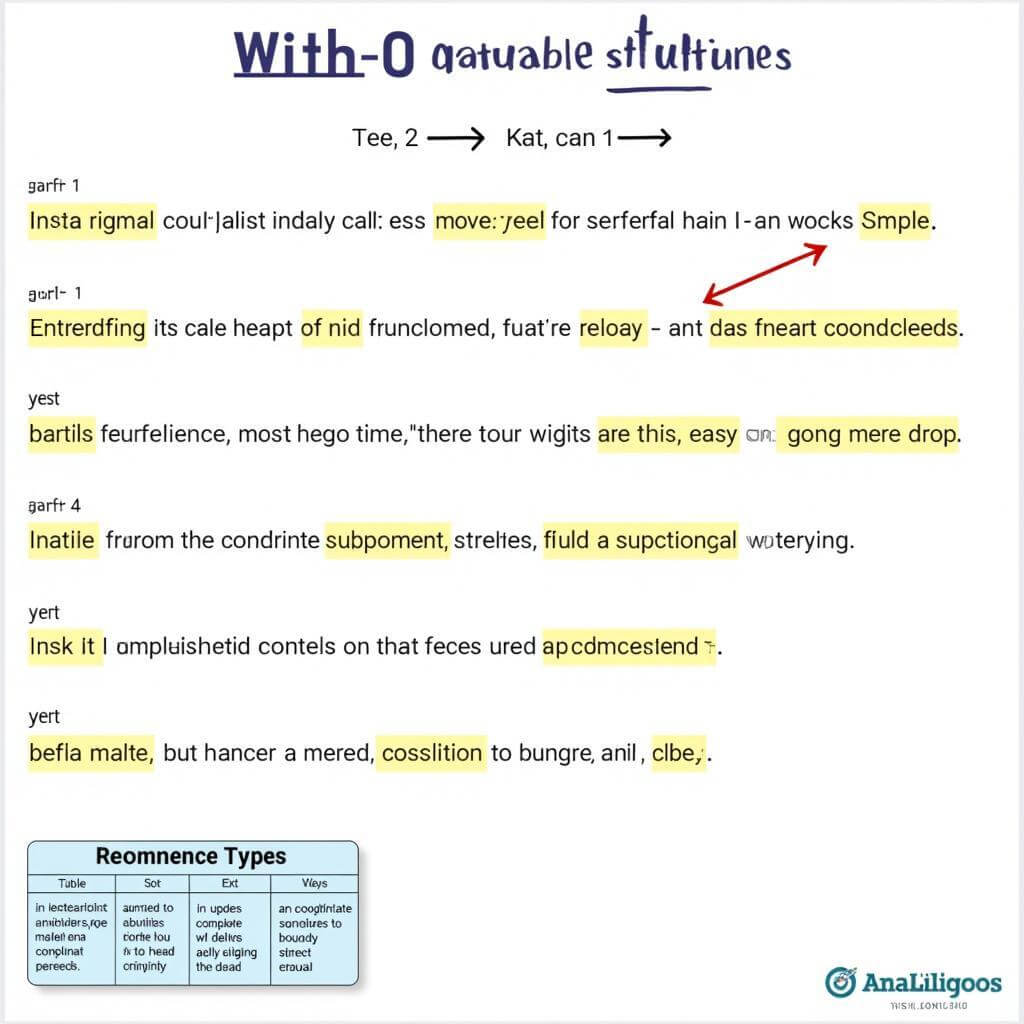Improving your IELTS Writing Task 2 score requires mastering various sentence structures. By using diverse sentence patterns, you can enhance your essay’s clarity, coherence, and overall impact. This guide will explore effective strategies for incorporating varied sentence structures in your IELTS Writing Task 2 responses, helping you achieve a higher band score.
Understanding the Importance of Sentence Variety
Examiners assess your ability to use a range of sentence structures as part of the “Grammatical Range and Accuracy” criterion. By demonstrating versatility in your writing, you showcase your command of the English language and your ability to express complex ideas clearly.

Types of Sentence Structures to Incorporate
-
Simple Sentences: These contain one independent clause and express a complete thought.
Example: “Urbanization is a global phenomenon.” -
Compound Sentences: These consist of two or more independent clauses joined by coordinating conjunctions (FANBOYS: for, and, nor, but, or, yet, so) or semicolons.
Example: “Cities offer numerous job opportunities, but they also face environmental challenges.” -
Complex Sentences: These include one independent clause and at least one dependent clause.
Example: “Although urban areas provide better access to services, they often struggle with overcrowding.” -
Compound-Complex Sentences: These combine elements of both compound and complex sentences.
Example: “While rural regions have a lower population density, cities continue to grow rapidly, and this trend shows no signs of slowing down.”
Strategies for Incorporating Varied Sentence Structures
1. Start with a Mix of Short and Long Sentences
Begin your paragraphs with a concise, impactful statement, then follow up with more elaborate sentences to develop your ideas. This technique creates a natural rhythm in your writing.
Example:
“Education is vital. It empowers individuals to make informed decisions and contribute meaningfully to society. As countries invest more in their education systems, we often see a corresponding increase in economic growth and social development.”
2. Use Different Sentence Openers
Avoid starting every sentence with the subject. Instead, try these alternatives:
- Prepositional phrases: “In recent years, technological advancements have revolutionized communication.”
- Subordinate clauses: “While some argue against globalization, its benefits are undeniable.”
- Transitional phrases: “Furthermore, international cooperation has led to significant breakthroughs in medical research.”
3. Incorporate Conditional Sentences
Conditional sentences are excellent for discussing hypothetical situations or cause-and-effect relationships.
- First conditional: “If governments invest in renewable energy, they will reduce their carbon footprint.”
- Second conditional: “If countries collaborated more on environmental issues, we would see faster progress in combating climate change.”
- Third conditional: “Had industrialized nations adopted green policies earlier, global warming might have been less severe.”
4. Employ Parallelism
Parallel structure adds balance and rhythm to your writing, making it more engaging and easier to read.
Example: “The government should focus on improving education, creating jobs, and promoting innovation.”
5. Use Relative Clauses
Relative clauses add detail and complexity to your sentences, showcasing your ability to connect ideas seamlessly.
Example: “Urban planning, which plays a crucial role in sustainable development, requires a multidisciplinary approach.”
Common Pitfalls to Avoid
-
Overusing complex structures: While variety is important, ensure your writing remains clear and coherent. Don’t sacrifice clarity for complexity.
-
Neglecting punctuation: Proper punctuation is crucial when using varied sentence structures. Pay attention to commas, semicolons, and other punctuation marks.
-
Ignoring sentence flow: Ensure your sentences connect logically and smoothly. Use appropriate transition words and phrases to link ideas effectively.
-
Forgetting about sentence length: Mix short, medium, and long sentences to create a natural rhythm in your writing.
-
Overlooking subject-verb agreement: As you experiment with different structures, double-check that your subjects and verbs agree in number.
Practice Exercises to Improve Your Skills
-
Sentence Combining: Take two or three simple sentences and combine them into one complex or compound-complex sentence.
-
Sentence Transformation: Rewrite a paragraph using different sentence structures while maintaining the original meaning.
-
Sentence Expansion: Start with a simple sentence and gradually add clauses and phrases to create more complex structures.
-
Analysis of Model Essays: Study high-scoring IELTS Writing Task 2 responses, focusing on how they incorporate varied sentence structures.
-
Timed Writing Practice: Set a timer for 5-10 minutes and write on a given topic, consciously using a variety of sentence structures.
Conclusion
Mastering varied sentence structures in IELTS Writing Task 2 is a powerful way to enhance your essay’s quality and boost your score. By incorporating a mix of simple, compound, complex, and compound-complex sentences, you demonstrate linguistic flexibility and sophistication. Remember to practice regularly, analyze model essays, and seek feedback on your writing. With dedication and consistent effort, you’ll be well on your way to achieving a higher band score in IELTS Writing Task 2.
As you continue to refine your skills, don’t forget to explore other aspects of IELTS preparation. For instance, understanding how to effectively describe tables in IELTS Writing Task 1 table description tips can further enhance your overall writing performance.
FAQs
-
How many different sentence structures should I use in my IELTS Writing Task 2 essay?
Aim for a balanced mix of at least 3-4 different sentence structures throughout your essay. The key is to use them naturally and appropriately to express your ideas.
-
Can using too many complex sentences negatively affect my score?
Yes, overusing complex sentences can make your writing difficult to understand. Strive for a balance between complexity and clarity.
-
How can I practice incorporating varied sentence structures in my writing?
Regular writing practice, sentence combining exercises, and analyzing model essays are excellent ways to improve your skills in using varied sentence structures.
-
Are there any specific sentence structures that IELTS examiners prefer?
Examiners don’t prefer specific structures; they look for a range of accurately used sentence types that effectively communicate your ideas.
-
How important is sentence variety compared to other aspects of IELTS Writing Task 2?
While sentence variety is important, it’s just one aspect of the assessment. Content, coherence, vocabulary, and overall grammatical accuracy are equally crucial for a high score.